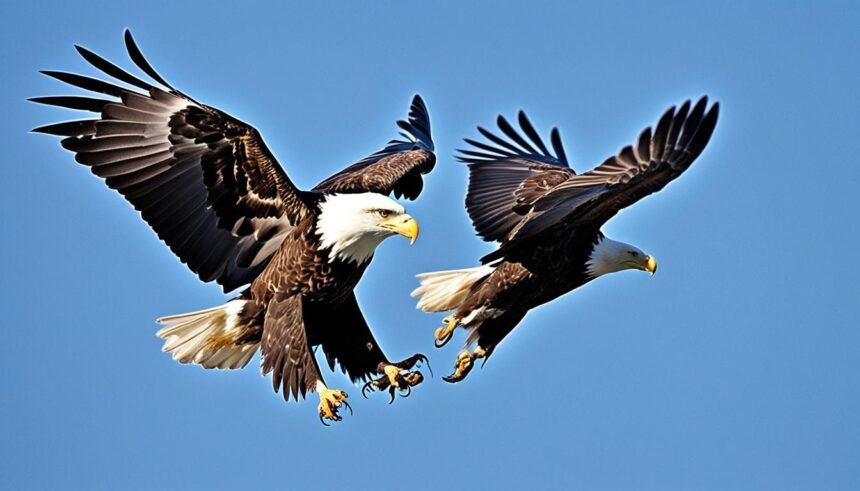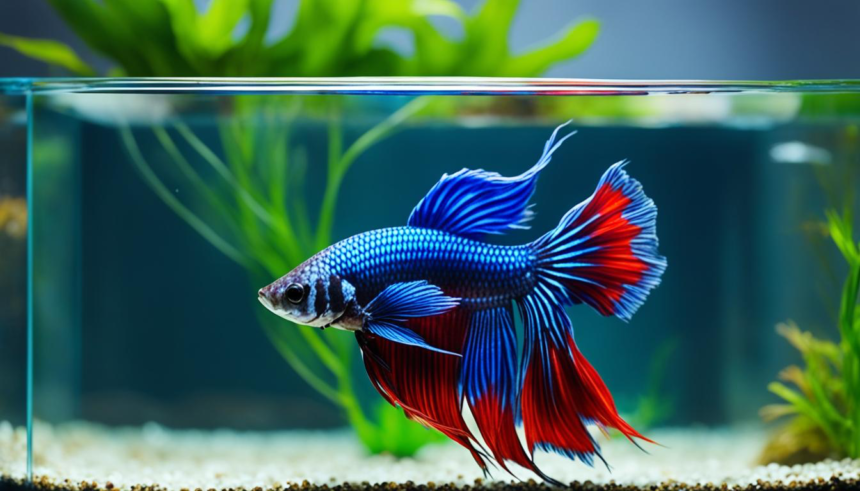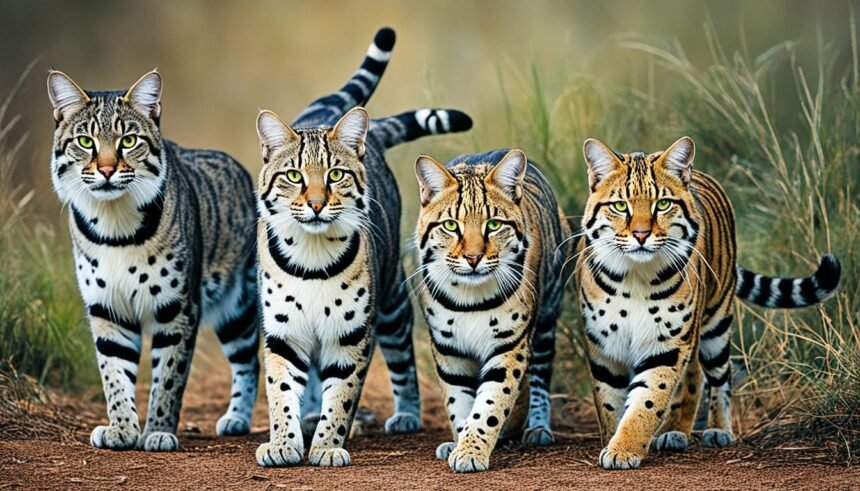Garter snakes are native to North America and are quite adaptable. They play a key role in their ecosystems. These snakes are meat-eaters and can live in many places. They eat fish, small rodents, and earthworms, showing their flexible diet. This guide gives a deep dive into their diet, both in the wild and in captivity.
Common garter snakes have green or brown stripes, making them stand out. In Massachusetts, they’re even celebrated as the state reptile. They’re known for being curious and can grow up to 3 feet long. They eat slugs from gardens and amphibians from wet areas. This shows how garter snakes adapt their eating habits based on what’s available.
Understanding the Garden Snake: An Overview of Thamnophis
The Thamnophis, better known as the common garter snake, is incredibly adaptable. These snakes are found all over North America. They live in both cold climates in Canada and warmer areas in the United States.
The Reptilian Inhabitant of Various Climates and Habitats
Garter snakes have evolved to live in many environments. They are often studied by scientists. Their homes are in meadows, forests, and near water.
Being close to water is vital for them. It helps them find food and stay safe from dangers. This makes it easier for them to survive.
Physical Features of the Common Garter Snake
The Thamnophis has features that help it blend in and survive. They have stripes that make it hard for other animals to see them. These stripes can be on a green or brown background.
An adult garter snake can be up to 30 inches long. This size makes it one of the bigger non-venomous snakes in North America.
| Feature | Description |
|---|---|
| Color | Green or brown body with distinctive yellowish or whitish stripes |
| Length | 20-30 inches (50-76 cm) |
| Habitat | Meadows, woodlands, near bodies of water |
| Diet | Earthworms, amphibians, leeches, fish, insects |
| Typical Behaviour | Non-venomous, hibernates in winter, good swimmer |
What Do Garter Snakes Eat in the Wild?
Garter snakes are tough and adaptable. They eat different foods based on where they live. These snakes do well in many places, from wet marshes to dry fields.
Garter Snakes’ Adaptive Diet Based on the Environment
The diet of garter snakes changes with their environment. In dry places, they eat mostly insects and earthworms. Near water, they shift to eating fish and amphibians. They can eat toads without getting sick from their poison.
Hunting Behavior and Preferred Prey Items
Garter snakes are skilled hunters. They use their sharp smell and sight to find food at night. They like to eat earthworms, insects, fish, and small amphibians. Their saliva has a little poison to help catch these animals.
The diet of garter snakes shows how they adjust to their surroundings. They find food in the water or on land. This makes them important in nature.
Prey on Land: Earthworms to Rodents
On land, garter snakes show their skill by eating different types of prey. They eat soft invertebrates like earthworms, slugs, and snails. They also catch stronger creatures like mice. These snakes are known for their ability to eat a lot of different animals. They also change their hunting ways to catch and eat their prey.
Garter snakes are very important to their environments. They help control the number of pests like slugs and mice. This helps keep nature in balance. Their hunting stops too many earthworms or small rodents from being in one place.
The way garter snakes hunt is key to their survival. They use their sharp senses to find and grab their prey. They are sneaky and accurate, capturing earthworms, mice, or slugs. Watching a garter snake quickly beat a rodent or eat a snail shows its meat-eating nature.
- Earthworms: These are often hunted following rainfall when they are more visible above ground.
- Slugs and Snails: These slower creatures are easy prey for garter snakes and are crucial during the drier seasons.
- Mice: Although not the primary diet, mice are opportunistically hunted especially in areas lacking smaller, softer prey.
- Rodents: Small rodents are sometimes overpowered by larger or more aggressive garter snakes, particularly in regions with fewer amphibian populations.
Understanding how garter snakes feed on land shows their flexibility and environmental impact. They live in many places and help control animal numbers. This supports all life and the natural food chain. Watching how they hunt helps us see the balance between predators and their prey. It also highlights how garter snakes help keep ecosystems healthy.
Water-Adjacent Diets: From Fish to Amphibians

Garter snakes live near water and have a varied diet. They eat aquatic animals like fish and tadpoles. They also eat many amphibians, including frogs, toads, and salamanders. This diet helps them thrive in water-rich areas.
Adaptations Allowing Consumption of Toxic Toads
Garter snakes can eat toxic toads safely. They have special body adaptations. These adaptations protect them from the toad’s poison. This ability lets them eat food that other predators cannot.
Diversity of Aquatic Prey Items for Garter Snakes
Garter snakes eat more than toads and frogs. They hunt small fish too. They also eat tadpoles and salamanders, which are good for their health. This shows how well garter snakes can adapt to their habitats.
The table below illustrates the primary aquatic prey items in the garter snake’s diet and the unique advantages each provides:
| Prey Type | Description | Benefits |
|---|---|---|
| Toads | Toxic amphibians | Immunity to toxins; abundant source |
| Frogs | Common amphibians in wetlands | Rich in protein |
| Fish | Various species found in freshwater | High in omega-3 fatty acids |
| Tadpoles | Early stages of frogs | Easy to catch; found in schools |
| Salamanders | Moist-skinned amphibians | Abundant in forested wetlands |
Meeting the Dietary Needs of Pet Garter Snakes
To keep pet garter snakes healthy in captivity, it’s vital to know what they eat. Their dietary needs can change a lot, depending on where they come from.
Feeding Preferences Depending on the Snake’s Origin
Garter snakes from different places eat different things. Snakes from wet areas often eat amphibians and small fish. Those from dry areas might eat earthworms and small mammals. It’s important to feed your pet snake like it would eat in the wild.
Providing a Balanced Diet in Captivity
Your garter snake’s diet should include a mix of nutritious food items. Frozen thawed mice are recommended to avoid injury and ensure safety. Here are tips to make sure your snake gets what it needs:
- Start with small thawed mice for baby snakes, increasing the size as they grow.
- Feed adult snakes once every two weeks to keep them from getting too fat, making sure each meal is big enough for their energy needs.
- Add supplements carefully to fix any lack of nutrients.
- Always have fresh water in a big bowl available, which helps with shedding.
Keeping the snake’s home clean with safe disinfectants is crucial for their well-being.
In captivity, garter snakes might eat too much or not enough, which could make them sick. Always watch how much and what you feed them. If needed, get help from a reptile vet to change their diet or add supplements.
Snakes in Your Garden: Natural Pest Control

Adding garter snakes to a garden offers an eco-friendly way to control pests. They eat rodents, slugs, and other pests. This keeps your garden’s ecological balance in check while reducing flora damage. As harmless snakes, garter snakes are not a threat to humans. Instead, they help by controlling the pest population.
Garter snakes hunt pests that damage garden crops and plants when they cruise your garden. They are especially good at dealing with slugs, a common garden problem. By welcoming these slithering friends into your garden, you support a natural pest control method. This also boosts your garden’s biodiversity.
Making your garden snake-friendly is simple but effective. Always check the lawn before mowing to avoid harming any snakes. Also, stay away from harsh chemicals like pesticides. This keeps the snakes safe and improves the garden’s health for all creatures.
Some might worry about the risks of having snakes in their gardens. But it’s good to know that garter snakes, a harmless species, usually avoid humans and run away when people get close. Learning about garter snakes and teaching your family about them can create a positive living situation for everyone.
To discover more about how snakes help gardens and control pests naturally, you can find additional information here.
The Relationship Between Garter Snakes and Their Prey
The complex relationship between snakes and prey shines through with the common garter snake. Known for its hunting techniques and excellent sense of smell, it’s a master at finding food. With its sharp smell, the garter snake can locate its prey very efficiently.
The Excellent Sense of Smell and Hunting Techniques
Garter snakes have a unique way of hunting. They use methods like peering, craning, and ambushing. These methods help them catch a wide range of food, from earthworms to small fish. Their slightly toxic saliva can paralyze some prey, showing their adapted hunting skills. These skills not only prove their keen sense of smell but also their vital role as predators in their environments.
Live Births in Garter Snakes and Young Snake’s Feeding
Garter snakes are different because they give live births. Right away, their young can interact with the world. Newborns can hunt on their own, eating things like insects and small amphibians. This shows adult garter snakes’ predatory behavior continues in their young. Their way of reproducing helps maintain ecosystem balance by keeping prey populations in check.
| Feature | Description |
|---|---|
| Species | Common Garter Snake |
| Reproduction Type | Ovoviviparous (Live births) |
| Young per Litter | 10-40 |
| Diet | Earthworms, amphibians, leeches, slugs, snails, insects, crayfish, small fish |
| Habitat | Near water sources, hibernates in natural cavities or burrows |
| Maturity Age | 1.5 years (males), 2 years (females) |
| Hunting Techniques | Peering, craning, ambushing |
Learning about the garter snake’s predatory tactics and how they reproduce is key. It gives us insight into their role in nature and aids in their conservation.
Garter Snakes Hibernate: Winter Survival and Diet Implications

In cold places, garter snakes hibernate during the chilly months. This is key for their survival, given their cold-blooded nature. From October to April, they snooze away in shared dens. Hundreds of snakes might bunker down together. They go below the frost line, slowing their metabolism to save energy.
When it gets cold, garter snakes stop eating. Instead, they live off energy stored from warmer times. This is vital because they can’t digest food when dormant. Their regular food includes earthworms, amphibians, and small rodents.
Their group sleeping helps keep them warm. It also boosts the survival of young snakes born late in the year. When they wake up together in spring, they’re more likely to find food and stay alive. Also, garter snakes are waking up about two weeks earlier than 40 years ago. This change might be due to the climate shifting.
Winter can be tough, with many snakes not making it. For instance, a study in Manitoba found over 60,000 snakes died in one winter. Despite this, places like the Narcisse Snake Dens in Gimli, Manitoba are vital. They provide a safe spot for many garter snakes to survive the winter and thrive in spring.
Garter Snakes in Motion: How Movement Affects Feeding
Garter snakes move in a special way that helps them eat. They use a S-shape movement to go over different grounds and sneak up on their food. This wavy move makes the garter snake a sneak-attack expert, using speed to grab prey accurately.
These snakes can do many movements like swim and climb trees. Being able to change how they move is crucial. It lets them chase prey in water and trees, giving them more ways to find food and avoid enemies.
Their movements are key to catching food and staying alive. How movement affects feeding really matters for what they eat and how they grow. Snakes that are quicker and more nimble can eat a wider variety of food. This means they can grow faster, which is vital for living and having babies.
Watching garter snakes in the wild shows how important slithering in an S-shape or quickly climbing is for their living. These actions are honed by nature, showing how evolution shapes them to fit their life’s needs perfectly.
Looking Under the Scales: The Physiology of Feeding
Exploring the world of garter snakes reveals how they’ve adapted to get the most from their food. They can eat prey that’s almost half their size, thanks to changes in their skull and hunting skills. These changes help them catch, hold, and digest their meals.
These snakes are also tough, protected by keratin scales. These scales help them move and keep safe while they eat their prey.
Nutrition Absorption and Shedding in Relation to Diet
Underneath their scales, garter snakes are well-suited to their environments. They shed their skin, which shows how diet affects their health. This shedding is part of growing and staying healthy, tied to how well they absorb nutrients.
What they eat impacts their size and skin health. Their skin must shed to make room for growth.
Common Foods to Avoid and Proper Supplements
Garter snakes have specific dietary needs. Some fish, for instance, can be harmful because they have thiaminase. It’s important to avoid these to keep the snakes healthy. For snakes kept as pets, adding supplements to their diet is key.
This helps make up for nutrients they might miss out on. Adding calcium or vitamin powder to their meals helps. Conservation efforts show garter snakes have a stable population. By understanding their dietary needs, we can ensure they thrive in the wild.
FAQ
What do garter snakes typically eat?
Garter snakes eat many things. Their diet includes earthworms, insects, and live fish. They also eat amphibians like frogs and toads. They are immune to the toxins of some prey. Small mammals and even birds are on their menu too. Their environment influences what they eat.
Can garter snakes live in both dry and wet environments?
Yes, they can. Garter snakes adapt well to different places. They live in meadows, woodlands, and yards. They do especially well near water.
How do garter snakes adapt their hunting behavior?
They use smell to find prey. By flicking their tongues, they catch scent particles. This helps them track down and catch what they eat. They can eat their prey whole. They change how they feed based on available food.
What prey do garter snakes seek out when living near water?
Garter snakes hunt aquatic prey by the water. They eat fish, tadpoles, and leeches. Frogs and salamanders are also part of their diet. They use their immunity to toxins from certain prey like toads.
Are there any special dietary needs for pet garter snakes?
Yes, pet garter snakes need a varied diet. It should include earthworms, fish, and leeches. Sometimes, live or thawed rodents add variety. Calcium or vitamin supplements can help them get enough nutrients.
Do garter snakes provide benefits in a garden setting?
Absolutely. They control pests like rodents and insects. They eat lots of slugs too. This makes them great for gardens. They’re harmless to people and help keep ecosystems balanced.
How do baby garter snakes fend for themselves?
Baby garter snakes can hunt as soon as they are born. They look for small prey immediately. They play a crucial role in the ecosystem by reducing prey populations.
What happens to garter snakes during the winter?
Garter snakes hibernate in the cold months. They find communal dens to stay warm. This helps them save energy. In spring, they wake up and are active again.
How does movement facilitate feeding in garter snakes?
Their flexible backbone helps them move smoothly to catch prey. They can make S-shaped movements. This skill helps in swimming and climbing too. It’s great for catching food and escaping dangers.
What are the dietary risks for garter snakes?
It’s important to avoid foods with thiaminase. This includes wild-caught fish. Thiaminase can lead to vitamin B1 deficiency. Sometimes, they need calcium supplements. This ensures they get all the nutrients they require.













